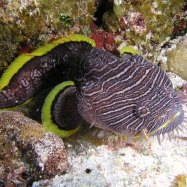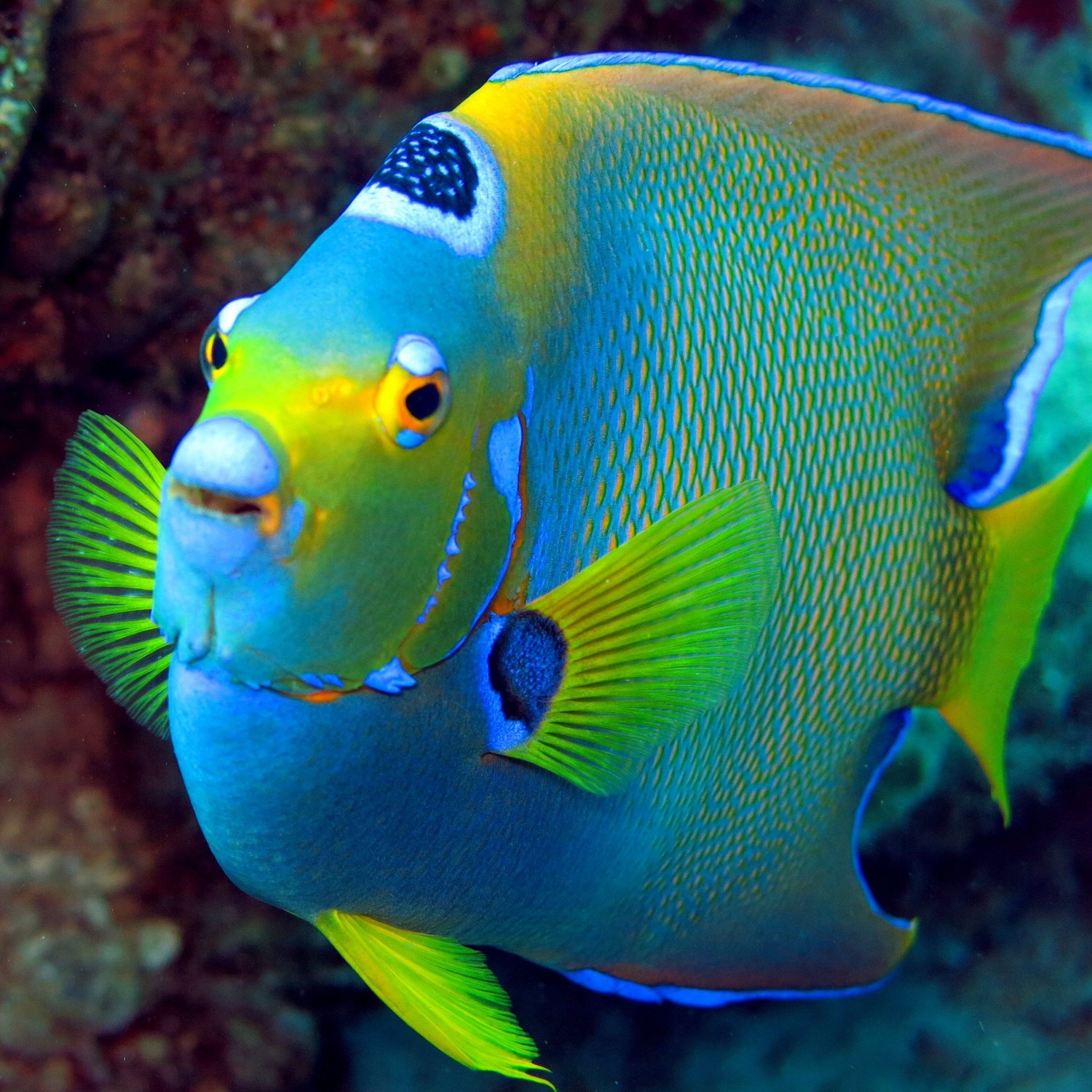
Angelfish
6 to 8 inches (15 to 20 cm)
Angelfish, known for their tall and elongated body shape, can reach a length of 6 to 8 inches. Found in the Amazon River basin, these beautiful fish belong to the Cichlidae family. With their vibrant colors and graceful movements, they make a popular addition to freshwater aquariums. Take care to provide a well-aerated tank and a balanced diet for these peaceful creatures to thrive. #Angelfish #AmazonRiver #Cichlids #AquariumFish
Animal Details Summary:
Common Name: Angelfish
Kingdom: Animalia
Habitat: Freshwater
The Graceful Angelfish: A Gem of the Amazon River Basin
From the depths of the Amazon river basin comes the elegant Angelfish (Pterophyllum scalare), a shining gem of South America. This freshwater species belongs to the kingdom Animalia, phylum Chordata, and class Actinopterygii. It is part of the order Perciformes and the family Cichlidae, making it a closely related cousin to species such as tilapia and discus fish.With its stunning coloration, tall and elongated body shape, and peaceful temperament, the angelfish has captured the hearts of aquarium enthusiasts around the world Angelfish. But there is much more to this graceful creature than meets the eye. Join us as we dive into the world of the angelfish and discover what makes it one of the most beloved freshwater fish.
A Diverse Habitat
The natural habitat of the angelfish is the freshwater regions of South America, specifically the Amazon river basin. This vast and diverse region covers over 7 million square kilometers, making it the largest and most complex tropical rainforest ecosystem on Earth. The Amazon basin is home to countless species of plants, insects, birds, and of course, fish.Within this sprawling ecosystem, the angelfish can be found in a variety of habitats, including rivers, streams, and flooded forests. But unlike other species of fish that are restricted to specific areas, the angelfish is known to adapt and thrive in a wide range of conditions. This versatility makes it a popular choice for aquarium hobbyists, as it can live comfortably in both large and small tanks.
A Unique Feeding Method
The angelfish is an omnivorous species, which means it consumes both plant-based and animal-based foods Ashy Mining Bee. In the wild, their diet includes small insects, worms, and crustaceans, as well as aquatic plants and algae. This varied diet ensures that the angelfish receives all the necessary nutrients for its health and growth.In an aquarium setting, angelfish can be fed a combination of flakes, pellets, and frozen or live foods. However, they have a unique feeding method that sets them apart from other species of fish. Angelfish have a special way of “grazing” on food, where they take small bites and chew on it while moving along, just like a cow grazing on grass. This behavior is fascinating to watch and adds to the charm of these graceful fish.
A Colorful Display
One of the most striking features of the angelfish is its coloration. Its body is covered in a mosaic-like pattern of stripes, dots, and spots, making it look like a piece of art. Although the base color of the angelfish is generally silver or white, there are a wide variety of color variations, ranging from gold to black.The coloration of the angelfish also serves a purpose beyond aesthetics. It is a common misconception that fish are colorblind, when in fact, they have the ability to see colors. In the wild, the coloration of the angelfish helps them blend in with their surroundings and avoid predators. In an aquarium, the coloration adds vibrancy and beauty to any tank.
A Distinct Body Shape
Another notable feature of the angelfish is its unique body shape. Unlike most fish that have a flat and elongated body, the angelfish has a tall and elongated shape, giving it a regal appearance. This body shape allows the angelfish to navigate through narrow spaces and reach higher parts of the tank, making it a great swimmers and jumpers.The tall and elongated body shape also gives the angelfish great maneuverability, allowing it to dart in and out of hiding places to avoid predators. In an aquarium, this body shape adds a dynamic element to the tank, as the angelfish gracefully glides through the water.
The Perfect Size
The average length of an angelfish is between 6 to 8 inches (15 to 20 cm), making it a perfect size for aquariums. This size allows for a group of angelfish to comfortably coexist in a tank, without feeling too crowded. It also makes them suitable for smaller tanks, making them accessible to a wider range of fishkeepers.It is important to note that the size of the tank should be proportional to the number of angelfish being kept. A good rule of thumb is to have a minimum of 10 gallons of water for every angelfish. This ensures that they have enough space to swim and thrive in.
This is Where They Call Home
The angelfish is native to the three South American countries of Brazil, Guyana, and Venezuela. But within these countries, they can be found in different regions, depending on the exact species of angelfish. Here are some of the most popular varieties and where they originate from:Wild Angelfish
As the name suggests, wild angelfish are found in their natural habitat in the Amazon river basin. They have a more streamlined shape and stronger coloration compared to the domesticated angelfish. Wild angelfish are generally harder to find in the aquarium trade, as they are often difficult to breed in captivity.Domestic Angelfish
Domestic angelfish, on the other hand, are bred and raised in captivity. This selective breeding has resulted in a variety of color patterns and shapes. Domestic angelfish are commonly found in pet stores and aquariums, as they adapt well to aquarium life and are easier to care for compared to their wild counterparts.Albino Angelfish
Albino angelfish are the result of a genetic mutation in the Pterophyllum scalare species. They are characterized by their lack of pigment, which gives them a white or cream body with pink or red eyes. Albino angelfish are a genetic variation of the standard species, and as such, they can be found in both wild and domesticated forms.Black Angelfish
Black angelfish are another popular variety of angelfish, with a dark and striking coloration. They have a black body with silver markings, making them a visually striking addition to any aquarium. Black angelfish are a result of selective breeding and are only found in domesticated forms.The Joys and Challenges of Owning an Angelfish
As with any pet, there are joys and challenges to owning an angelfish. Understanding these aspects is crucial in providing the best care for your angelfish and ensuring their well-being.The Joys
Angelfish are incredibly peaceful and gentle creatures, making them a great addition to a community tank. They are also social animals and thrive in groups, so having multiple angelfish in one tank is recommended. This also allows for the display of their natural behaviors, such as “grazing” and swimming in a group.Their graceful and elegant appearance makes them a pleasure to watch, and the variety of color patterns and shapes add to the visual appeal. Angelfish also have long lifespans, with proper care and a suitable environment, they can live up to 10 years in captivity.
The Challenges
Owning an angelfish also comes with its own set of challenges. One of the main challenges is their sensitivity to water conditions. Angelfish require a specific pH level (6-7.5) and water temperature (78-84 degrees Fahrenheit) to thrive. Any drastic changes in these conditions can lead to stress and illness in your angelfish.Another challenge is that angelfish are known to be fin nippers. They may nip at the fins of slower or less dominant fish in the tank, causing damage and stress. To avoid this, it is recommended to have angelfish with similar-sized, quick-moving fish that are not prone to fin nipping.
The Responsibility of Being an Angelfish Owner
Owning an angelfish is a responsibility that should not be taken lightly. These beautiful creatures deserve a proper and loving environment to thrive in. Here are a few key points to consider before bringing home an angelfish:Tank Size
As mentioned earlier, a minimum of 10 gallons of water is recommended for every angelfish. This ensures that they have enough space to move and swim comfortably.Tank Mates
Angelfish do well with other peaceful fish, such as tetras, guppies, mollies, and swordtails, among others. It is best to avoid aggressive or large fish, as they may intimidate or harm the angelfish.Water Conditions
Maintaining proper water conditions is crucial for the health and well-being of your angelfish. Regular water changes, monitoring pH levels, and consistent water temperature are essential for their survival.Food and Feeding
As mentioned earlier, angelfish are omnivorous and require a varied diet. It is recommended to feed them twice a day, in small amounts, to avoid overfeeding. It is also important to offer both plant-based and animal-based foods to ensure they receive all the necessary nutrients.The Future of the Angelfish
The popularity of angelfish in the aquarium trade has led to their widespread availability and domestication. However, their natural habitat, the Amazon river basin, is facing various threats, such as deforestation, overfishing, and climate change. These factors have led to a decline in wild angelfish populations, making conservation efforts crucial.To protect the future of the angelfish, it is important to support sustainable practices and responsible ownership. This includes purchasing angelfish from reputable breeders and ensuring they are kept in suitable environments. It is also important to be mindful of the impact our choices make on the environment and to do our part in preserving the natural habitats of these magnificent creatures.
In Conclusion
The Angelfish (Pterophyllum scalare) is a stunning and fascinating species that has captured the hearts of fish enthusiasts worldwide. Its natural habitat, feeding behaviors, coloration, and unique body shape make it a standout in the world of freshwater fish. And while there are challenges to owning an angelfish, the rewards far outweigh them.As responsible caretakers of these magnificent creatures, it is our duty to ensure their well-being and to protect their natural habitats. By understanding their needs and behaviors, we can create a harmonious environment for them to thrive in and continue to enjoy the beauty and grace of the angelfish for years to come.

Angelfish
Animal Details Angelfish - Scientific Name: Pterophyllum scalare
- Category: Animals A
- Scientific Name: Pterophyllum scalare
- Common Name: Angelfish
- Kingdom: Animalia
- Phylum: Chordata
- Class: Actinopterygii
- Order: Perciformes
- Family: Cichlidae
- Habitat: Freshwater
- Feeding Method: Omnivorous
- Geographical Distribution: South America
- Country of Origin: Brazil, Guyana, Venezuela
- Location: Amazon River basin
- Animal Coloration: Varies
- Body Shape: Tall and elongated
- Length: 6 to 8 inches (15 to 20 cm)
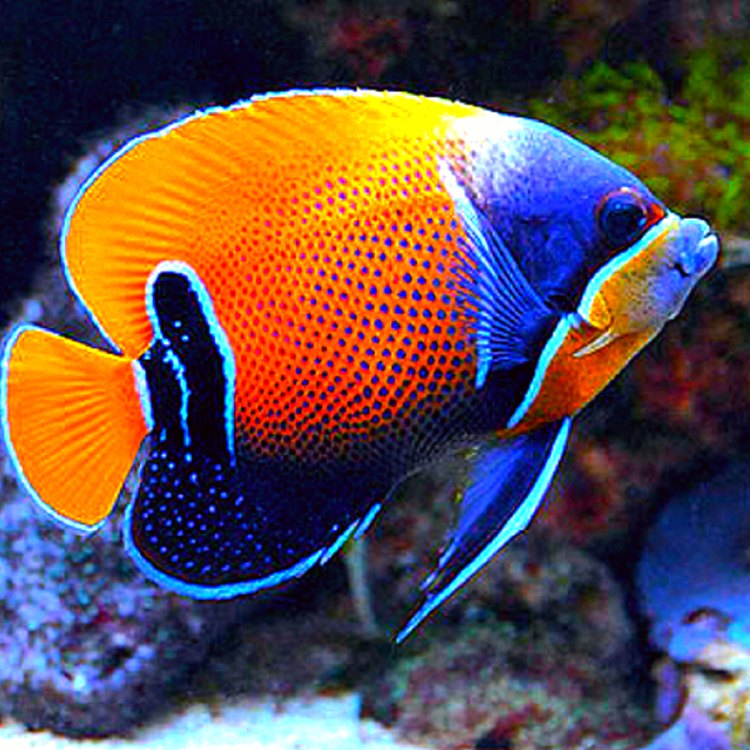
Angelfish
- Adult Size: 6 inches (15 cm)
- Average Lifespan: 10 to 12 years
- Reproduction: Egg-layers
- Reproductive Behavior: Pair bonding
- Sound or Call: Inaudible
- Migration Pattern: Non-migratory
- Social Groups: Solitary or in small groups
- Behavior: Territorial
- Threats: Habitat loss, pollution, overfishing
- Conservation Status: Not evaluated
- Impact on Ecosystem: Important for food web
- Human Use: Aquarium trade
- Distinctive Features: Triangular shape, long fins
- Interesting Facts: Angelfish have been bred in a wide range of color variations
- Predator: Large fish, birds
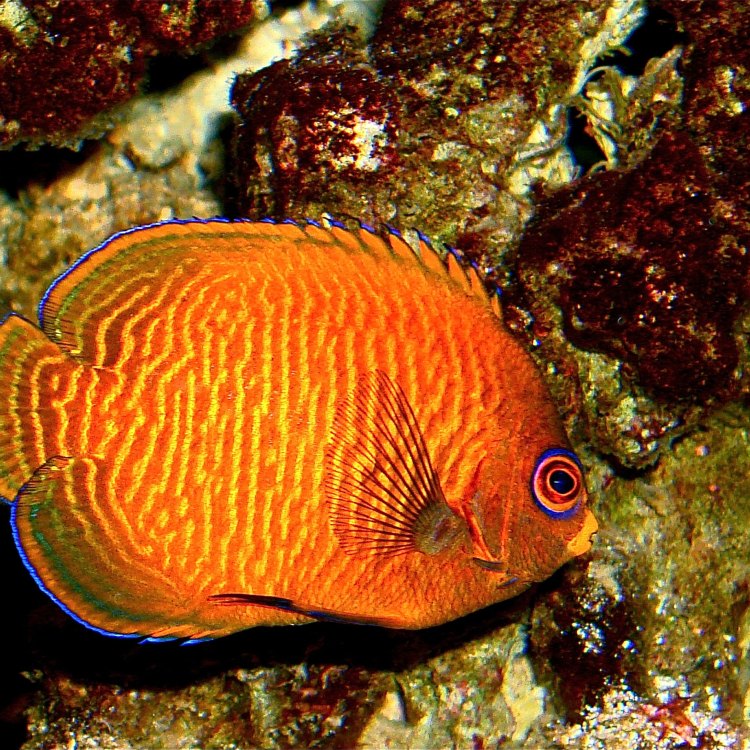
Pterophyllum scalare
The Majestic Angelfish: A Marvel of the Sea
The ocean is a vast and mysterious world, filled with creatures big and small. Among the most mesmerizing inhabitants of the deep blue sea is the angelfish. With its unique triangular shape and long fins, the angelfish is a stunning sight to behold. But there is more to this fish than its beauty PeaceOfAnimals.Com. In this article, we will explore the fascinating features and behavior of angelfish, and how they contribute to the delicate ecosystem of our oceans.First, let's get familiar with this enchanting creature. The angelfish, also known as Pterophyllum scalare, belongs to the cichlid family of freshwater fish. It is native to the Amazon River, its tributaries, and other South American river systems. The angelfish is a popular pet among aquarium enthusiasts due to its vibrant colors and elegant appearance. However, in its natural habitat, this fish plays a vital role in maintaining the balance of the underwater world.
One of the most striking features of angelfish is its size. As an adult, it can grow up to 6 inches (15 cm), making it one of the largest freshwater fish. This size is significant when considering its potential impact on the ecosystem American Pygmy Goat. Angelfish have an average lifespan of 10 to 12 years in captivity, but in the wild, they can live even longer. This makes them a significant presence in the environment, with ample opportunities to contribute to its functionality.
Reproduction is a crucial aspect of any species' survival and angelfish are no exception. They are egg-layers, meaning the female deposits eggs that are fertilized by the male. However, the reproductive behavior of angelfish is unique. Unlike most fish species, they practice pair bonding, where a male and female form a relationship and mate solely with each other. This behavior could be attributed to their territorial nature, as we will discuss later.
One fascinating aspect of angelfish is their sound or call. As surprising as it may seem, these fish do produce sounds, but they are inaudible to the human ear. Angelfish communicate with each other through vibrations produced by rubbing their spines together. These vibrations travel through the surrounding water and are picked up by other angelfish.
We often associate migration patterns with birds and mammals, but angelfish have their own unique pattern. They are non-migratory, which means they do not make long-distance journeys. Instead, they remain in the same area, slowly moving within their habitat throughout their lifetime. This pattern could be linked to their territorial behavior, as they establish and defend their territory for feeding and reproduction purposes.
Socially, angelfish can be found either solitary or in small groups. In the wild, they are known to form pair bonds, as mentioned earlier, but they can also be seen patrolling their territory alone. In aquariums, they often thrive in small groups, showing minimal aggression towards each other. This can be a challenging aspect of keeping angelfish as pets since they require ample space to establish their territories.
The primary behavior of angelfish is territorial. In their natural habitat, they establish their territories and defend them against other fish to secure food resources and breeding grounds. They are incredibly adaptive, being able to thrive in both still water and areas with a constant current. Their ability to acclimate to different environments has made them a dominant species in their habitat.
Despite their territorial nature, angelfish have many predators. Their elongated body and long fins make them an easy target for larger fish. They are also targeted by birds, who swoop in and pluck them out of the water. In the wild, angelfish must use their sharp senses and agility to evade predators and survive in their challenging environment.
While angelfish have natural predators, the biggest threat to their population is human activities. Habitat loss, pollution, and overfishing are the primary threats that have led to a decline in angelfish populations. The destruction of their natural habitat due to deforestation and the damming of rivers has significantly impacted their numbers. Pollution from oil spills, agricultural runoff, and plastic waste also pose a threat to their existence. Overfishing for the aquarium trade has reduced their numbers even further, as these magnificent creatures are highly sought after for their beauty.
Despite these threats, the conservation status of angelfish has not yet been evaluated. This is concerning, as it means their population has not been extensively studied, and measures have not been put in place to protect them. It is crucial that we take action to protect this species and preserve their habitat to ensure their survival in the wild.
The impact of angelfish on the ecosystem cannot be ignored. As mentioned earlier, they play a vital role in maintaining the balance of their environment. Their territorial behavior leads them to control the population of smaller fish and invertebrates, preventing overpopulation and preserving the food chain. Their presence is also crucial for the growth of aquatic plants, as they aid in the distribution of plant spores.
In addition to their ecological importance, angelfish also have a significant impact on the human world. As mentioned earlier, they are highly sought after in the aquarium trade. This demand has led to the breeding of angelfish in a wide range of color variations, making them even more desirable to aquarium owners. This has also helped to reduce the need for wild-caught angelfish, which contributes to the decline of their population. However, it is crucial that we only obtain angelfish from reputable and sustainable sources to avoid further damaging their population in the wild.
In conclusion, the angelfish is not just a stunning fish but a vital part of the freshwater ecosystem. Their distinctive features, reproductive behavior, and territorial nature all contribute to their role as a keystone species. However, their survival is at risk due to human activities, and it is our responsibility to take action to protect this magnificent creature. Let us appreciate the beauty of the angelfish and strive to ensure its existence for generations to come.
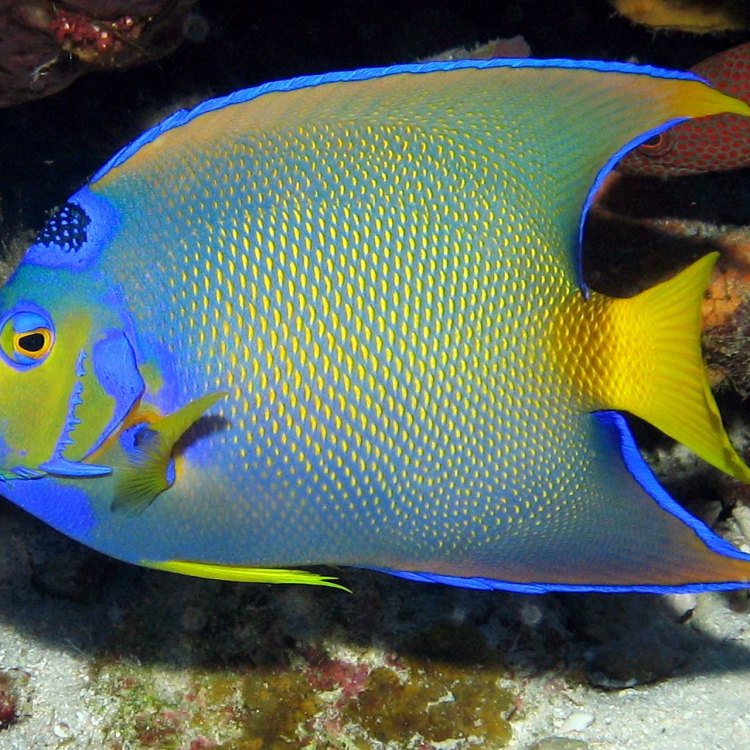
The Graceful Angelfish: A Gem of the Amazon River Basin
Disclaimer: The content provided is for informational purposes only. We cannot guarantee the accuracy of the information on this page 100%. All information provided here may change without prior notice.






